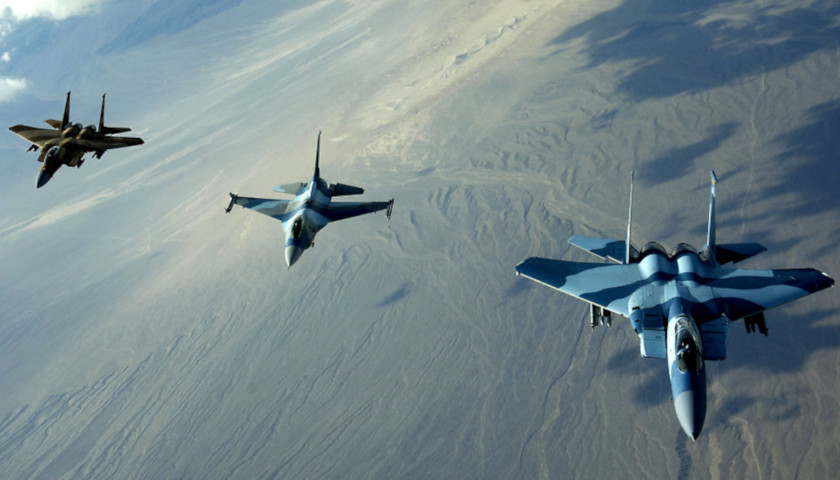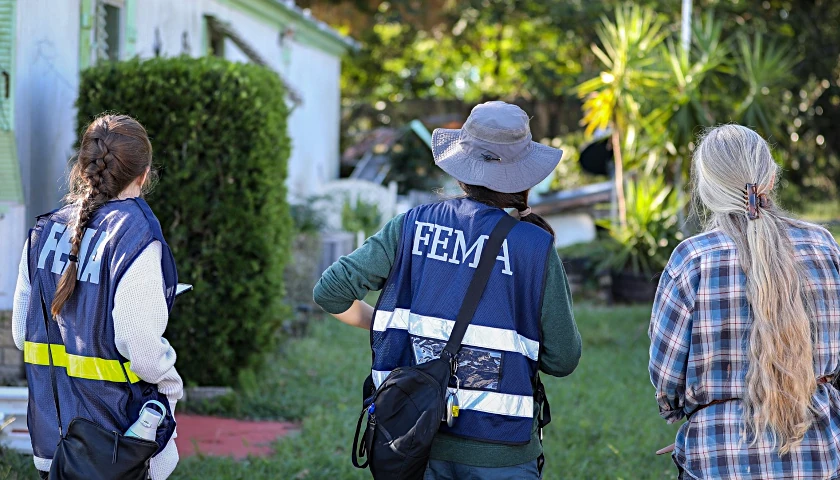by Brandon J. Weichert
The United States has a problem: It has a military-industrial complex built on assumptions about international security dating from the last century.
Despite maintaining a larger defense budget than the next 10 countries behind it, the United States has been painfully slow to respond to the new, relatively cheap, threats of the 21st century. Our foreign-policy establishment continues to view today’s asymmetrical threats in 20th-century terms. Doing so allows the defense establishment to remain within its proverbial comfort zone of large budgets, even larger bureaucracy, and highly-centralized authority in Washington, D.C.
America’s defense establishment today is a microcosm of the entropy befalling Western political institutions in general. The longer we fail to adapt to today’s various threats, the more unsafe we are. What’s more, the standard operating procedures that have defined American military policy are no longer applicable today. Like the defense establishments of Europe in 1914, our modes of deterrence are ill-suited for the new century.
Unlearning Lessons of the Past
As military historian Hew Strachan describes in his excellent 2003 book, The First World War, the way that European leaders in the run-up to that conflict conceptualized the “Balkan Crisis,” and the way that the various defense establishments in Europe implemented their standard responses to that crisis—namely, the mobilization of military forces—actually precipitated the conflict instead of deterring it.
Before World War I, European militaries were able to construct a system for operating in a foreign policy crisis that matched the mobilization of armed forces with diplomacy. If a European state wanted to get the attention of one of their neighbors, and conventional diplomacy did not work, then that state would ramp up its military and make it appear as though they were readying for war. In Strachan’s assessment, mobilization “was a form of brinkmanship rather than a step in an inevitable escalation.”
But, Strachan observes, before 1914 the limited nature of communications and transportation technology in Europe meant that a crisis could play out over weeks and months, giving European leaders the time they needed peacefully to defuse a crisis. In 1914, unfortunately, “key decisions [on mobilization] were made in the space of one week.” Thus, the “pace of events was such that there was no time to clarify the distinction between warning and intent.” As a result, mobilization became conflict and the conflict became a world war in weeks.
Even those European leaders who did court war, such as Austria-Hungary’s chief of the general staff, Franz Conrad von Hötzendorff, believed that such a conflict would be confined to the Balkans, the place where Archduke Franz Ferdinand—the next in line to the Austro-Hungarian throne—and his wife were gunned down by Serbian nationalists.
In effect, Hötzendorff and the Austro-Hungarian leadership assumed they were fighting the Third Balkan War rather than initiating the First World War. But once the Austro-Hungarians initiated conflict, the massive warfighting bureaucracies of Europe went into action—relying on the standards and methods from the previous century, without taking into account how new technology and ideologies would affect their prescribed responses.
The Cold War Is Over
Similarly, the United States today has crafted a defense policy which is predicated on unchallenged assumptions from the Cold War and its immediate aftermath. America’s defense establishment, so large and unwieldy, cannot respond well to threats when enemies introduce unpredictability and chaos into the mix. We’ve done little to account for the advances in technology that define our age, and America’s rivals know this.
For example, today’s policymakers like fusing military brinkmanship with diplomacy—just as the 19th-century European leaders did. This is certainly an important tool. But this concept has rarely been tested by Americans in a multipolar world that is replete with multiple nuclear-armed players.
What’s more, the conventions that previously defined Cold War-era relations do not necessarily apply today, just as the norms that dominated international diplomacy from the post-Napoleonic War era were not relevant by 1914. Radical and irrational actors who possess more threatening capabilities than they did in the past are now part of the equation. At the same time, strategic competitors have developed copious asymmetrical capabilities meant to stymie and stunt the traditional American grand strategy.
Meanwhile, the American defense establishment continues making large investments in what are known as “legacy” systems—expensive and unwieldy platforms designed to fight yesterday’s wars.
In fact, America’s entire defense strategy is geared toward fighting yesterday’s conflicts (or worse, imagined threats that are unlikely to materialize). The reason the United States faces a threat environment today that similar to that of the 1930s is that Washington has not updated its institutions or priorities to better conform with the 21st-century climate. That world is defined by decentralized networks and high-tech capabilities that are wedded to pre-modern ideologies. Today’s threats are more diffuse and their capabilities are more finely focused, whereas America’s military capabilities are unfocused and far too expansive.
Dangers Near and Far
America’s present rivals are not directly threatening the United States with hard military power. Instead, they are developing unconventional methods of attack to confuse and sap America’s overwhelming strength over the long-term.
For instance, cyber warfare, space warfare, information warfare, economic warfare, competition for dominance over natural resources, terrorism, lawfare—using international law as a weapon to stop the United States from using military force—and nuclear weapons proliferation are the greatest threats the United States faces from abroad. Few of Washington’s expensive defense policies truly protect the United States from these threats.
Instead, the United States continues attempting to use its hard military power to roll back the various threats we face . . . to no avail.
Today, China is stronger than ever before. Russia has returned to Europe and the Middle East in force—while also expanding operations into Africa and Latin America. Pissant countries, like Iran and North Korea, continue to undermine American security. Meanwhile, the U.S. cannot defeat jihadist terror networks.
Rather than rely on standard operating procedures from the previous century, policymakers need to do more with less by focusing on building up our defenses against the asymmetrical forms of warfare. By relying exclusively on offensive, hard power, America’s national security“experts” will only precipitate future crises. And in today’s world, such crises could easily devolve into another world war—one the United States might not win.
– – –




